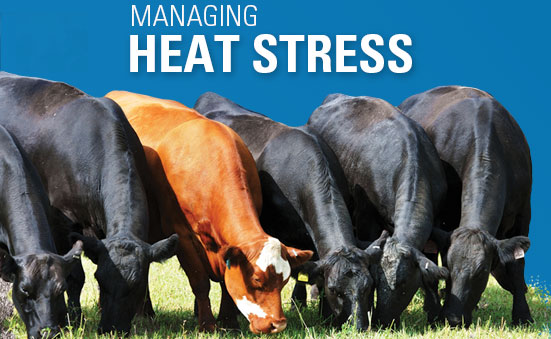Heat stress impacts cattle performance and costs millions of dollars in annual economic losses. Animal responses to heat stress include reduced dry matter intake, decreased average daily gain, decreased milk yield, decreased fertility and poor reproduction.
As Figure 1 reflects, the severity of heat stress is commonly estimated by temperature-humidity indexes (THI).
Some have hypothesized that it is not just the extent of heat stress alone that affects animals, but also the duration of the heat stress. This is supported by anecdotal evidence from the field, where it is commonly observed that adequate night cooling reduces the impact of heat stress during multiple-day periods of elevated temperature and humidity.
It is also presumed that the minimum threshold where animals begin experiencing heat stress is a function of the production level of the animal. For example, in growing steers the threshold is considered to be a THI of 84, whereas in a high producing lactating dairy cow the threshold will be considerably lower, starting at a THI of 70. At the same ambient temperature, a higher-producing dairy cow will have to dissipate more heat to the environment than a lower-producing cow of the same size.
In addition to reduced performance, physiological responses to heat stress include increased respiration rates and body temperatures elevated above 39°C (102.2°F). Body temperature rises when cows are no longer able to dissipate body heat to the environment, and is a very sensitive indicator of heat stress. Cows may exhibit panting and drooling as behavioral and physical responses to heat stress.
Feeding Amaferm® during heat stress has multiple benefits including improved digestibility, increased energy availability, improved rumen function and decreased loss of performance. The improved digestibility observed with Amaferm provides more energy to the animal during heat stress when intake is reduced. Amaferm has been shown to improve milk yield performance with lactating cows under heat stress (Figure 2) and help maintain body condition (Chiou et al., 2002). The benefits of Amaferm in dairy cattle production can also be translated to beef brood cow and feedlot performance. In summary, feeding Amaferm during heat stress can:
- Increase digestibility.
- Increase energy availability.
- Improve microbial protein yields.
- Help stabilize rumen function and pH due to stress disrupting feeding patterns, which can lead to consumption of unusually large meal size.
- Improve milk yields and help maintain body condition.
- Improve overall performance.
If you have questions about heat stress in cattle, please email support@biozymeinc.com and we’ll put you in touch with one of our nutritionists. Also, be sure to check out our mineral products, VitaFerm® HEAT and VitaFerm HEAT CTC 3G, specifically designed to help you combat summer heat stress and the effects of fescue pastures.
